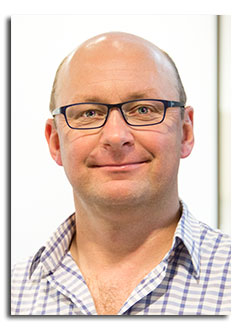
Abstract
Converting solar energy into electricity or any other form of useful power is a ‘systems’ problem. For example, in photovoltaics, the initial photon harvesting and transduction to electrical energy utilises individual semiconducting photojunctions. These photojunctions are arranged in arrays in various parallel and series configurations to create modules of appropriate DC output voltage and current. Modules are likewise combined into strings for DC to AC conversion using suitable power electronics. In solar plants, large centralised inverters are managed by complicated central control systems to shape output to the grid or a specific load. At the house-hold level on small systems, the inverter increasingly has ‘smart’ network and demand control technology which can be used to feed local load, export, or interface with a battery. So, the photojunction ‘solar cell’ is the primary element in a cascade of components, hardware, software and processes.
Recognising these facts, our research portfolio in solar PV at UQ spans the ‘system’. We undertake basic materials science, chemistry and physics research in next generation thin film solar cells including organic and organohalide perovskite semiconductors. We also study the scaling physics of thin film solar cells – the underlying principles that cause loss of efficiency in moving from small laboratory cells to geometries that are viable and relevant for manufacturing. Under the UQ Solar banner we have also deployed MW-scale solar PV plants at several of our campuses. In particular, the 3.275 MW Gatton Solar Research Facility is a global-first-of-a-kind. It contains fixed, single axis tracking and dual axis tracking CdTe First Solar modules alongside a 760 kW h Li-ion battery (MPower-Kokam), all controlled for optimal generation by a bespoke and proprietary Central Supervisory System (CSS). The research program associated with the Gatton Solar Research Facility is expansive and covers power engineering, operational optimisation, control systems, storage, energy economic and policy development.
In my seminar I will describe several aspects of our research across this broad spectrum of activities and scales. I will also highlight how an informed understanding of solar PV systems can inform basic research endeavours, and vice-versa. Our research portfolio really does span molecules to MW.
Click here to see all available video seminars.
Click here to go to the SPREE HOMEPAGE.
Brief Bio
Professor Meredith is professor of materials physics at UQ. He is currently an ARC Discovery Outstanding Research Award Fellow, co-director of the Centre for Organic Photonics and Electronics, and Director of UQ Solar. His research involves the development of new sustainable high-tech materials for applications such as solar energy and bioelectronics. Professor Meredith has published >180 papers and 28 patents, and is co-founder of several start-up companies including XeroCoat and Brisbane Materials Technology. He is the recipient of numerous awards including the Premier of Queensland’s Sustainability Award (2013) and is widely recognised for his contributions to innovation and the promotion of renewable energy. He serves on several advisory bodies and boards including the Premier of Queensland’s Climate Change Council (2010/2011), the Australian Solar Thermal Research Initiative Advisory Board (2015), and the ARENA Solar R&D Program Technical Advisory Board (2014).
